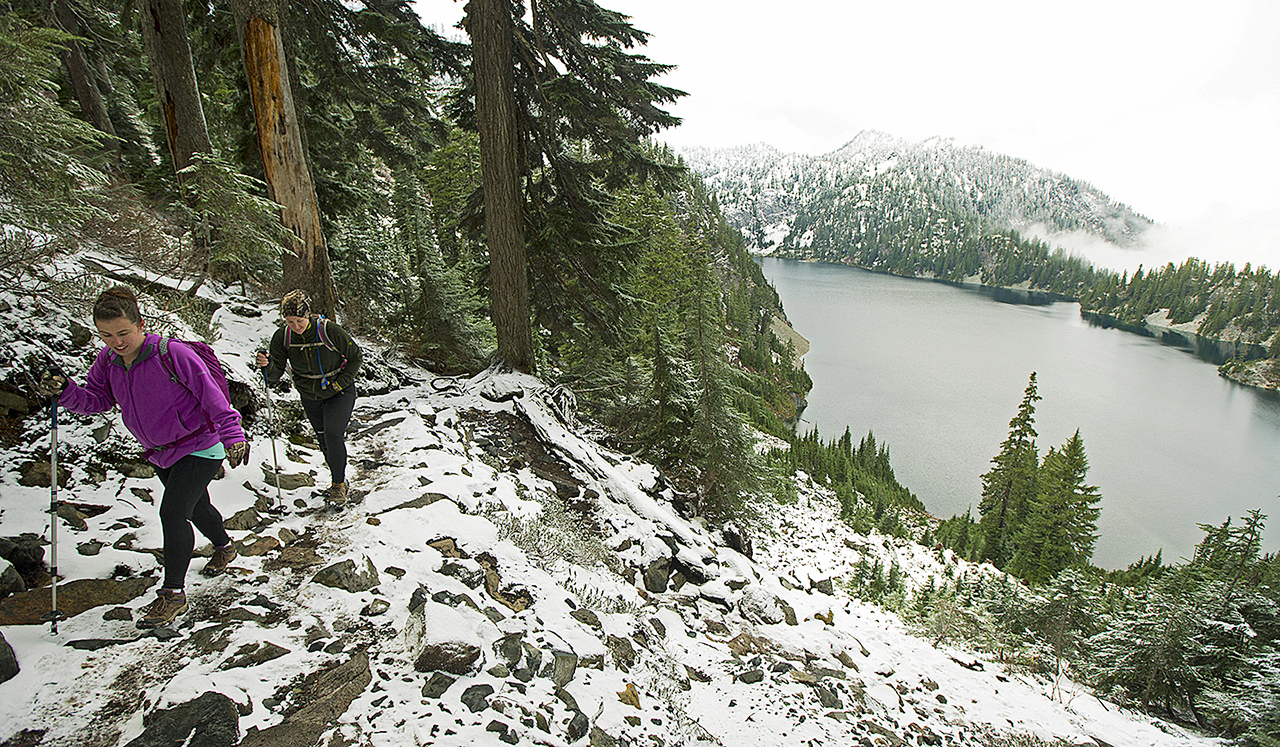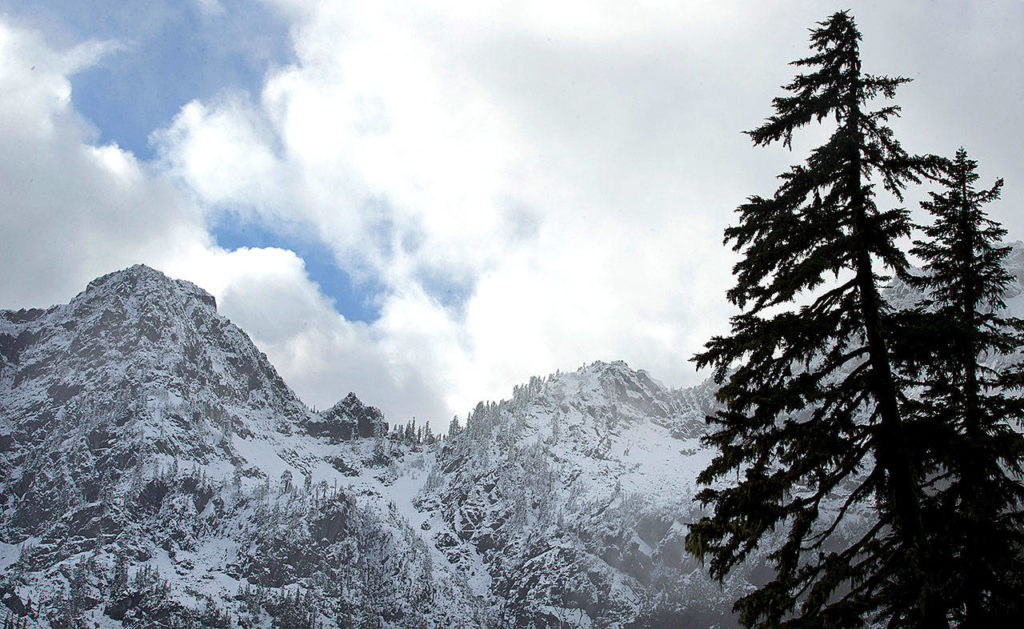Washington Trails Association
Check the weather. Choose your destinations wisely. Tell others where you will be hiking. Pack smart. Know when to turn back.
This is how to stay safe while hiking in late fall and winter.
As December arrives, winter follows in the high country. The fall color has faded and the trees have shed their leaves. The Olympics and Cascades have gotten their first serious dusting of snow and dirt trails vanish under a white blanket.
As a result, hiking in the mountains changes. Backcountry exploration in late fall can present dangers that far exceed those of hiking in the summertime. Rain can quickly turn to white-out, snowy conditions — disorienting even for the most experienced of hikers.
Trails buried under snow can be difficult to follow. Ice can make the tread slippery. Steep side slopes covered in unstable snow are a recipe for avalanches. And it gets dark early.
Despite the increased risks, hiking can be a pure joy in late fall. It’s easier to find solitude, which also increases your chances of glimpsing wildlife. The air is crisp and exhilarating. And with the trees bare, new views open up.
Still, hikers and snowshoers need to do plenty of planning and take precautions before hitting the trail. Here are some tips for safer backcountry exploration in late fall:
Check the weather
There are no shortage of good online sources for mountain weather and road conditions. For mountain forecasts, our favorite is the National Weather Service’s Mountain Forecast website. It gives detailed forecasts for both mountain passes and actual hiking destinations, and includes links to zone area forecasts for freezing/snow levels.
Other good websites include Washington Online Weather and the Northwest Weather and Avalanche Center, which provides not only detailed avalanche forecasts but also comprehensive weather data and forecasts for the mountains. To gauge snow depth, check out a Washington snow map from the National Water and Climate Center.
For road conditions, WSDOT has up-to-date mountain pass conditions, including cameras on five well-traveled routes. It is also wise to call ahead to the ranger station where you plan to hike or snowshoe to determine current conditions, especially the local roads where storms or fallen trees can shut off routes unexpectedly.
Choose your destinations wisely
Many trails will have new snow, and the snow level will continue to drop as autumn goes on. Check for recent trip reports online from other hikers to confirm your chosen trail is snow-free. While you’re on the phone with your local ranger about roads, also ask about trail conditions.
Tell someone where you are
Always let someone know where you are going and when you expect to return (and call them when you do return!). You can find a trip plan form at www.wta.org to print, fill out and leave behind with someone you know before your next hike. If your destination changes, follow up and let someone know. Hiking with a companion is always a good choice this time of year.
Pack smart
They’re called the 10 essentials, and all hikers should carry them year round, but they are even more essential as the weather becomes colder and more unpredictable.
The 10 essentials include a topographic map and compass (and a knowledge of how to use them), extra food, extra clothing, firestarter, matches, sun protection, a pocket knife, first-aid kit and a flashlight.
For fall and winter hiking, the 10 essentials are extra important, and there are a few other things you may want to carry as well:
Heavy extra clothing: Pack plenty of layers made of materials such as wool or polypropolene that wick sweat and moisture away from your body.
Headlamp or flashlight (and extra batteries): This tool is especially important in the winter, since days are short and night comes quickly.
Plenty of extra food: When it is cold, you burn more calories, so bring along extra food and keep your energy level high.
Plenty of water: You may not feel as thirsty as you do when it is warm, but it is just as important to keep hydrated by drinking often.
Emergency shelter and/or sleeping bag: Seriously consider carrying these in case you have to spend a night out there. They could save your life.
Portable shovel: Going where there is snow? A shovel is a critically important winter survival tool, which will assist you in digging snow caves in which you can survive a bitterly cold night. Also, it’s nearly impossible to dig someone out of an avalanche without a shovel.
Avalanche beacon: In avalanche country, consider carrying an avalanche beacon. And know how to use it properly.
Use common sense
Getting late in the afternoon? Is snow starting to fall in earnest? Is the trail hard to follow, or does it pass beneath a steep slope? As tempting as it may be to push on to your destination, know when to turn back. Attaining a summit or making it to a lake isn’t worth risking a night out in the cold or getting lost in a white-out.
Use common sense out there. You can always return another day.
Washington Trails Association is the nation’s largest state-based hiking advocacy nonprofit. WTA promotes hiking as a way to inspire a people to protect Washington’s natural places through collaboration, education, advocacy and volunteer trail maintenance. Learn more at www.wta.org.
Talk to us
> Give us your news tips.
> Send us a letter to the editor.
> More Herald contact information.


























